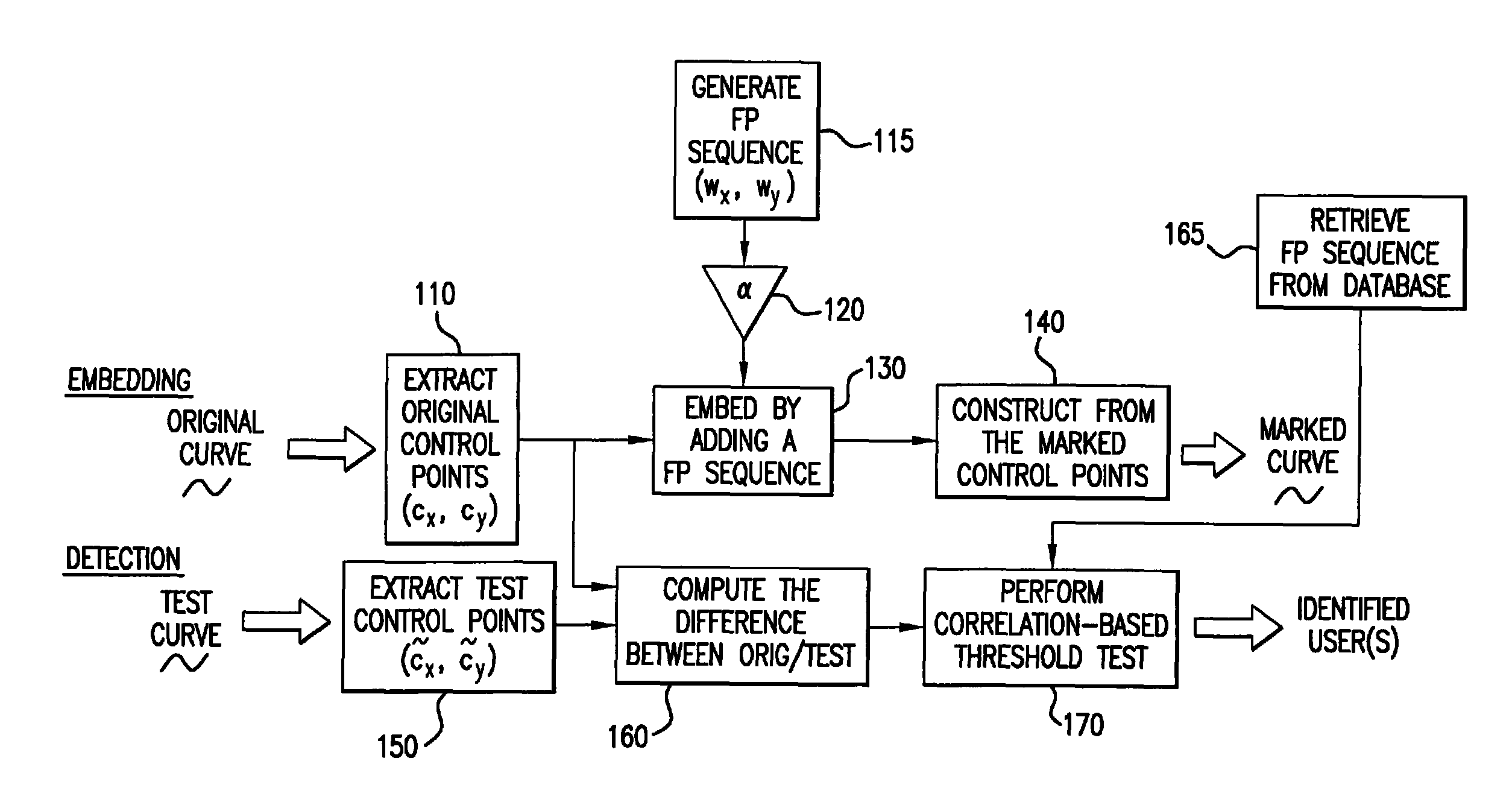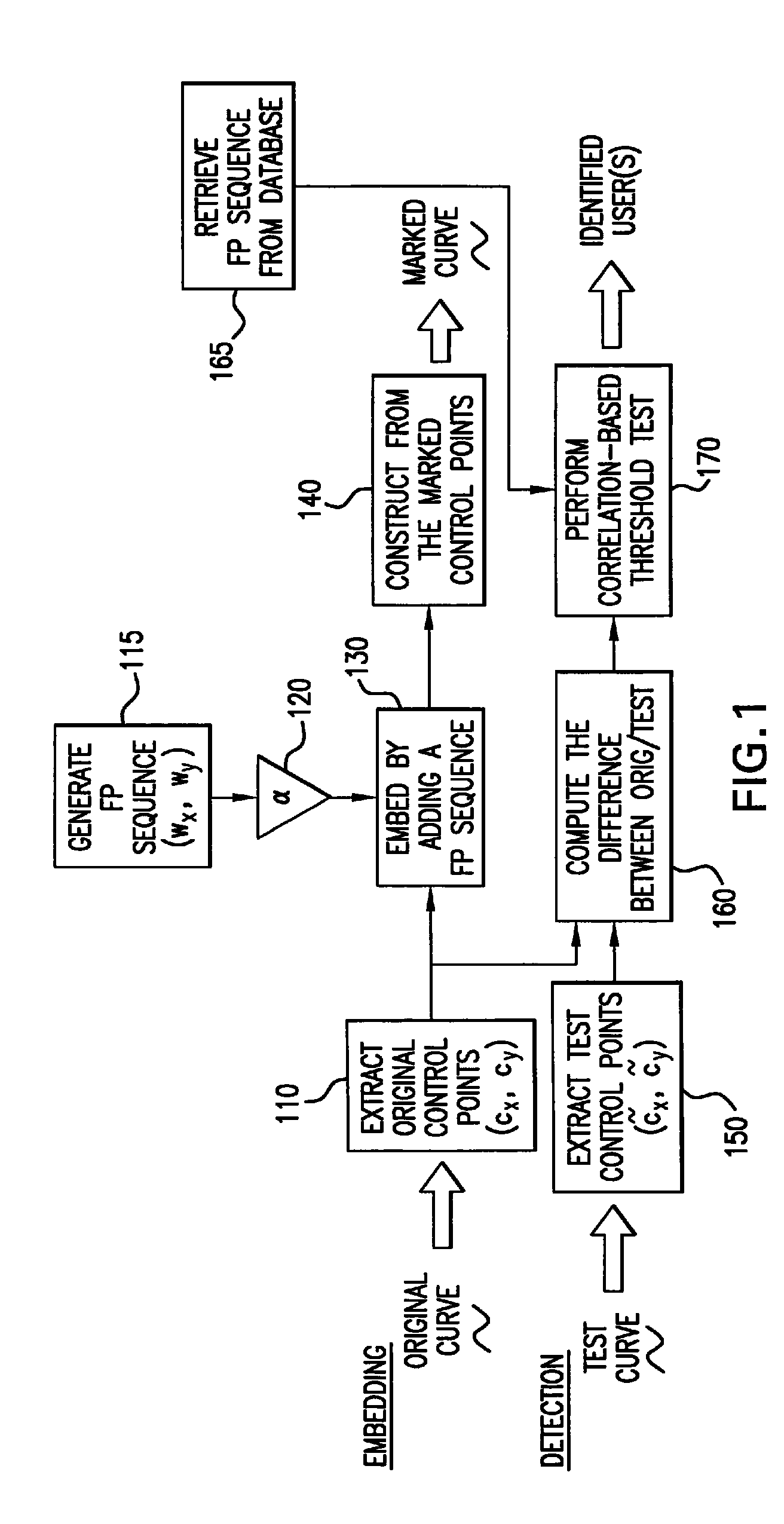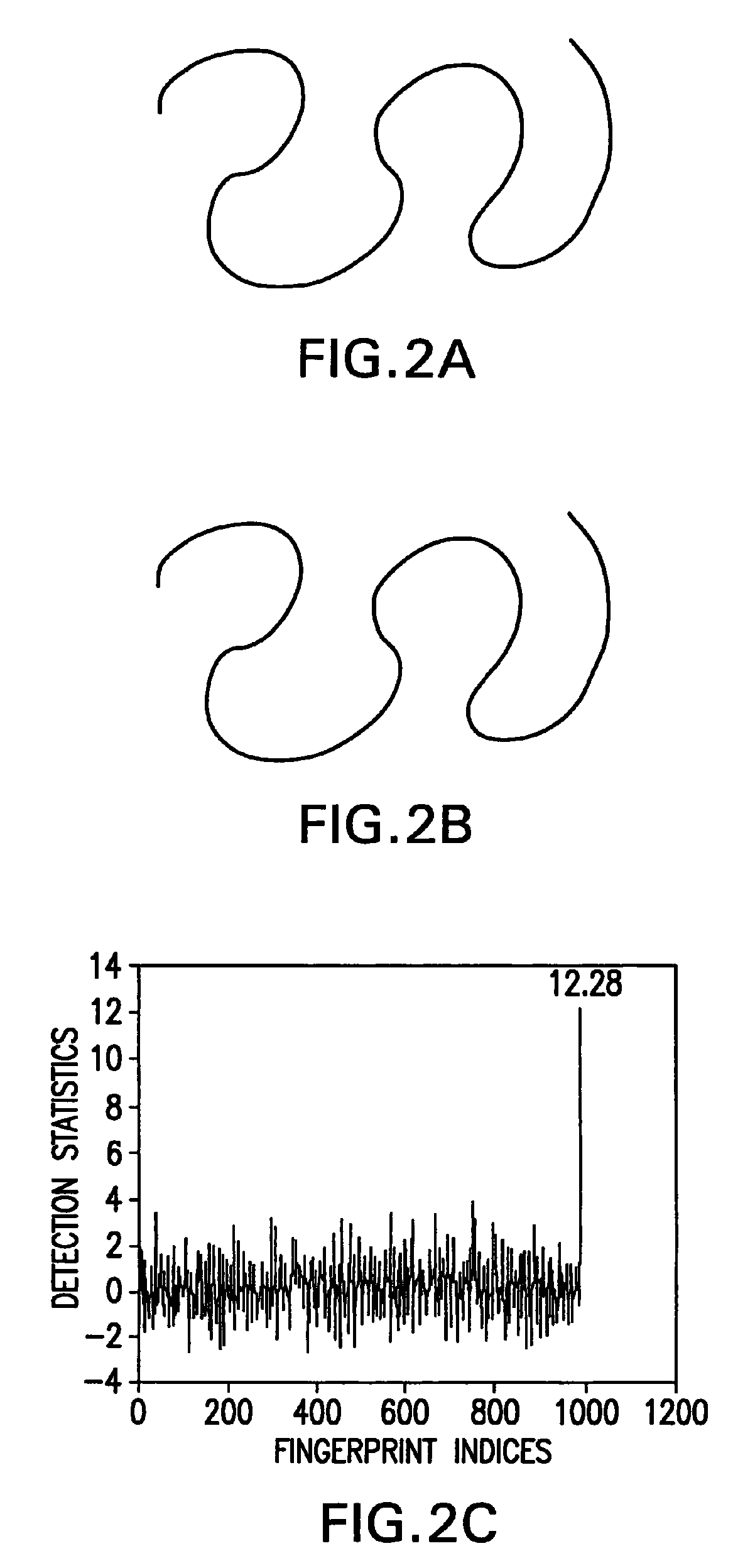Method for concealing data in curves of an image
a curve and data technology, applied in image watermarking, instruments, computing, etc., can solve the problems of affecting the accuracy of image curve registration, etc., to achieve the effect of high precision and facilitate automatic curve registration
- Summary
- Abstract
- Description
- Claims
- Application Information
AI Technical Summary
Benefits of technology
Problems solved by technology
Method used
Image
Examples
Embodiment Construction
[0035]Aspects of the present invention are directed to manipulating the controlling parameters that define the structure of one or more curves in an image. As will be shown, the controlling parameters may be coordinates of the control points of B-spline curve segments, to which values representative of the data to be concealed are added. Although exemplary embodiments described below utilize certain fingerprint data as the data to be hidden in the curves, the invention is applicable to other data not specifically described. Thus, the invention is not limited to curves of any specific type of image nor is it limited to any specific data that may be concealed thereby.
[0036]Furthermore, it is to be noted that the term “image” is used herein to refer to a broad class of data structures. That is to say, that while the present invention is applicable to images in hard copy documents and images displayed on a display device, the term as used herein is also intended to refer to data structu...
PUM
 Login to View More
Login to View More Abstract
Description
Claims
Application Information
 Login to View More
Login to View More - R&D
- Intellectual Property
- Life Sciences
- Materials
- Tech Scout
- Unparalleled Data Quality
- Higher Quality Content
- 60% Fewer Hallucinations
Browse by: Latest US Patents, China's latest patents, Technical Efficacy Thesaurus, Application Domain, Technology Topic, Popular Technical Reports.
© 2025 PatSnap. All rights reserved.Legal|Privacy policy|Modern Slavery Act Transparency Statement|Sitemap|About US| Contact US: help@patsnap.com



